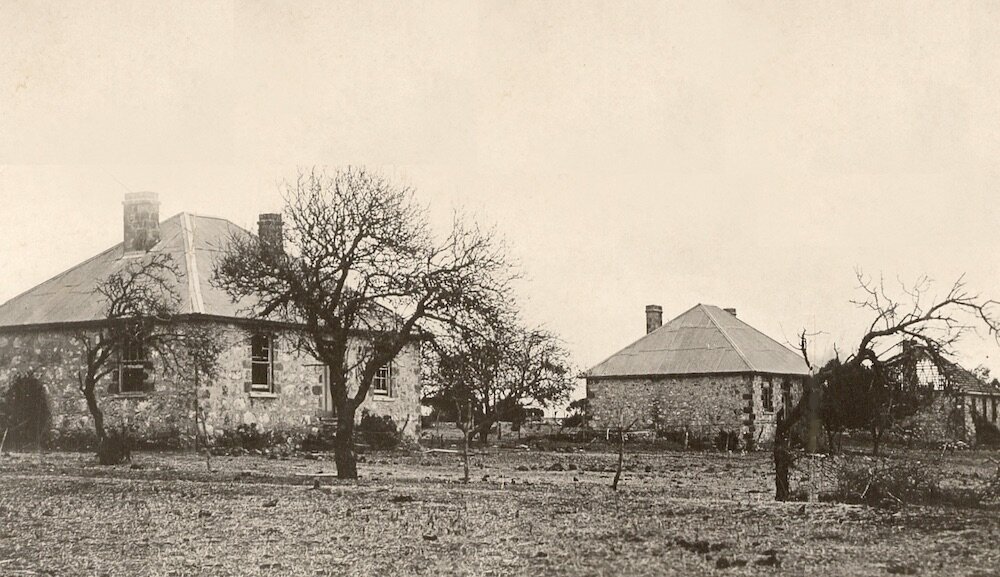
History abounds, but is not always faithfully recorded, inevitably being interpreted by the views and impressions of the recorder. To hopefully correct such faults, a small group of people in England in the 1890's worked out a plan that would ensure a true record. When the details were finalised in 1895, they called the body they formed 'The National Trust'. This organisation was given the authority to arrange and preserve such items as would provide a permanent source of natural history. These included buildings and their acquisition and maintenance, photographs, manuscripts, papers, tools of trade, household effects and so on. The concept took hold and branches of the trust were formed.
The NSW branch was formed in 1945 and the Adelaide branch began in 1955. In 1965, Dene Cordes called a public meeting in Kingscote to consider the formation of a Kangaroo Island Branch. The meeting was well attended and was addressed by Mr Alexander who represented the parent body in Adelaide. Jack Elsegood was selected as the first chairman and Dene Cordes as secretary. It was all very well to form the organisation, but if the artefacts were to be displayed, accommodation needed to be found. Hope Cottage became that place.In November 1836, the vessel Africaine arrived at the anchorage in Nepean Bay. Among its passengers was Jeremiah Calnan with his wife and young family. It seems Mr Calnan was not impressed with the poor soil, and, together with the shortage of summertime water, he had concerns for the infant colony. He set off for the mainland looking for better opportunities for his family, unfortunately he died soon after and is thought to be buried in the vicinity of the present day Victor Harbor. His family remained on Kangaroo Island, his sons in the employ of The South Australian Company, the private body which was sponsoring the first attempt at settlement in South Australia.
When gold was discovered in Victoria in 1851, two of the Calnan men were sent to the diggings and were successful in mining a quantity of gold and bringing it back to the island. That in itself was quite an achievement in those relatively lawless days. They invested their gold in the building of three identical stone homes on the high ground overlooking the original landing place, later to be known as Reeves Point. The houses were the first to be built with any degree of permanence in the the new settlement and bore the date 1859. The houses became known as Faith, Hope, and Charity.
The NSW branch was formed in 1945 and the Adelaide branch began in 1955. In 1965, Dene Cordes called a public meeting in Kingscote to consider the formation of a Kangaroo Island Branch. The meeting was well attended and was addressed by Mr Alexander who represented the parent body in Adelaide. Jack Elsegood was selected as the first chairman and Dene Cordes as secretary. It was all very well to form the organisation, but if the artefacts were to be displayed, accommodation needed to be found. Hope Cottage became that place.In November 1836, the vessel Africaine arrived at the anchorage in Nepean Bay. Among its passengers was Jeremiah Calnan with his wife and young family. It seems Mr Calnan was not impressed with the poor soil, and, together with the shortage of summertime water, he had concerns for the infant colony. He set off for the mainland looking for better opportunities for his family, unfortunately he died soon after and is thought to be buried in the vicinity of the present day Victor Harbor. His family remained on Kangaroo Island, his sons in the employ of The South Australian Company, the private body which was sponsoring the first attempt at settlement in South Australia.
When gold was discovered in Victoria in 1851, two of the Calnan men were sent to the diggings and were successful in mining a quantity of gold and bringing it back to the island. That in itself was quite an achievement in those relatively lawless days. They invested their gold in the building of three identical stone homes on the high ground overlooking the original landing place, later to be known as Reeves Point. The houses were the first to be built with any degree of permanence in the the new settlement and bore the date 1859. The houses became known as Faith, Hope, and Charity.
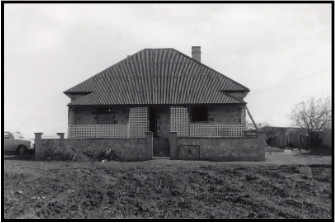
When the Kangaroo Island branch of the trust was formed, Faith was no longer there, having been demolished in the 1920's. Hope was in a dilapidated condition, but Charity was still occupied by Mr and Mrs Carter. Roy Carter, a grandson of Jeremiah Calnan, lived the whole of his life in the vicinity of Kingscote. In the 1930's he delivered milk by horseback to the growing town and mail to the sparse settlements along the North Coast. On the return journeys he would call in at Western River, stay the night, and return to Kingscote the following day, often carrying replies to the letters he had delivered the previous day. When motor transport replaced his horse, he was employed as the typesetter for Mr Cook, the proprietor and editor of the Kangaroo Island Courier which began in 1907.
Because of Mr Carter's association with the history of the island, and his ownership of Charity Cottage, he offered the use of the front room to the trust to house the many artefacts which it had acquired. The offer was gratefully accepted The energetic trust committee was so successful in acquiring so many items, it asked the Carters' for the use of another room. They granted this, and Mrs Carter acted in a voluntary capacity as the curator and due to her lively interest in the project made an invaluable contribution to the success of the branch.
On the 27th July, 1969, as owner of Section1, (the first lease in South Australia to be registered), Mr Carter donated the land, including Reeves point to the District Council. This area is now developed as "Carter Reserve". The current owner of "Charity" advised that it was no longer convenient for the museum to be housed there, so the committee had to find other premises. "Hope" at this point had been condemned, so an approach was made to the owner Mr Arthur Daw, another Calnan descendant, and the purchase of the house and surrounding land was affected and vested in the National Trust of South Australia. The ensuing renovation entailed much time, effort, and enthusiasm.
As the number of exhibits grew, so did the need for more buildings. In the next few years sheds were constructed and acquired, one being a former council depot shed and another from the Parndana Soldier Settlement Camp. They form a quadrangle at the rear of the cottage. These sheds housed the many tools and forms of equipment the farming community donated to the museum. A complete blacksmith shop was built, enabling those with the necessary skills to ply their craft. Storage space once again became scarce and another shed was built to house photographs, articles etc, relating to the Island's vital sea and air transport. In recent years several of the original sheds have been enlarged to accommodate the growing number of exhibits.
In the early 1970's the Cape Willoughby Lighthouse was de-commissioned and the essential parts were acquired and rebuilt in a commanding position on the museum grounds.
The garden of Hope Cottage was kept as close as possible to the original plantings.
Hope Cottage Museum was officially opened on December 10th, 1971.
Because of Mr Carter's association with the history of the island, and his ownership of Charity Cottage, he offered the use of the front room to the trust to house the many artefacts which it had acquired. The offer was gratefully accepted The energetic trust committee was so successful in acquiring so many items, it asked the Carters' for the use of another room. They granted this, and Mrs Carter acted in a voluntary capacity as the curator and due to her lively interest in the project made an invaluable contribution to the success of the branch.
On the 27th July, 1969, as owner of Section1, (the first lease in South Australia to be registered), Mr Carter donated the land, including Reeves point to the District Council. This area is now developed as "Carter Reserve". The current owner of "Charity" advised that it was no longer convenient for the museum to be housed there, so the committee had to find other premises. "Hope" at this point had been condemned, so an approach was made to the owner Mr Arthur Daw, another Calnan descendant, and the purchase of the house and surrounding land was affected and vested in the National Trust of South Australia. The ensuing renovation entailed much time, effort, and enthusiasm.
As the number of exhibits grew, so did the need for more buildings. In the next few years sheds were constructed and acquired, one being a former council depot shed and another from the Parndana Soldier Settlement Camp. They form a quadrangle at the rear of the cottage. These sheds housed the many tools and forms of equipment the farming community donated to the museum. A complete blacksmith shop was built, enabling those with the necessary skills to ply their craft. Storage space once again became scarce and another shed was built to house photographs, articles etc, relating to the Island's vital sea and air transport. In recent years several of the original sheds have been enlarged to accommodate the growing number of exhibits.
In the early 1970's the Cape Willoughby Lighthouse was de-commissioned and the essential parts were acquired and rebuilt in a commanding position on the museum grounds.
The garden of Hope Cottage was kept as close as possible to the original plantings.
Hope Cottage Museum was officially opened on December 10th, 1971.
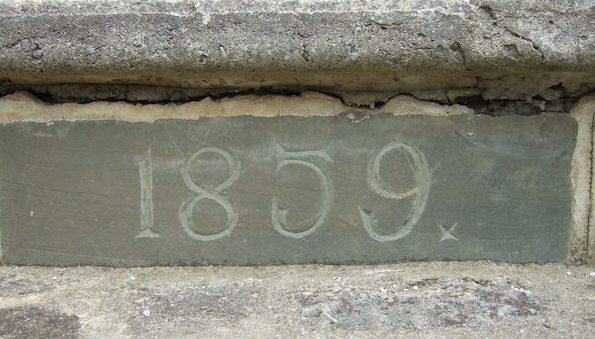
The Museum
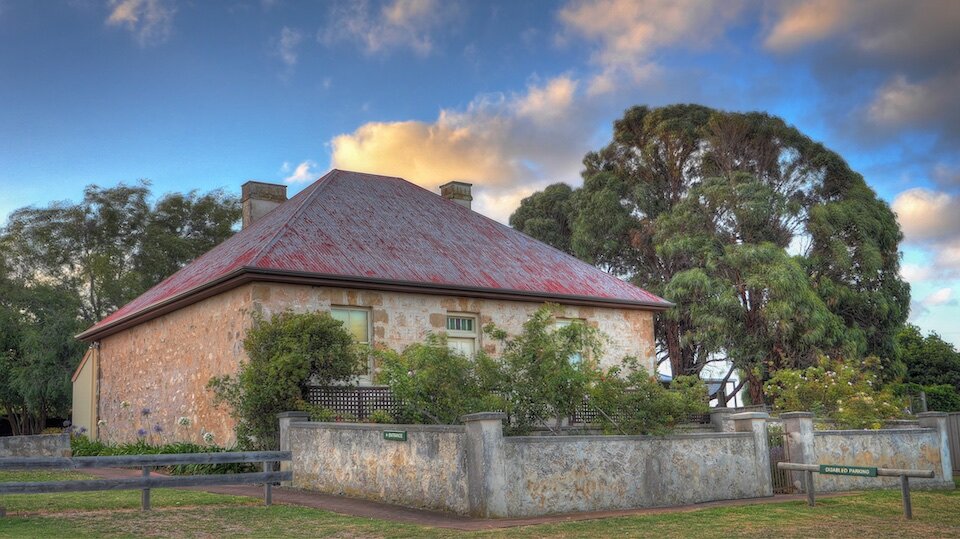
Hope Cottage Museum offers a fascinating insight into the unique history and heritage of Kangaroo Island.
Hope Cottage (originally built in 1859) is the restored home of Charles and Michael Calnan. The brothers, aided by a ship’s carpenter, built three small cottages from local stone. They were called Faith, Hope, and Charity. Unfortunately Faith has long since gone, but The National Trust have restored and maintained Hope Cottage with the surrounding museum, along with the re-created Cape Willoughby Lighthouse. Charity Cottage, now a private residence, remains alongside.
Hope Cottage represents life from the 1860’s onwards. Period furniture, china, clothing and artefacts are on display, along with the first piano brought to the Island by Michael Calnan, and a cellar containing kitchen items that were used for butter making, old mincers, and bottles etc. The cottage also contains another treasure, The “Beare Collection”. Thomas Hudson Beare was the second in command of The South Australian Company. His two year old daughter was the first to set foot ashore on July 27th, 1836, after a 152 day voyage from England.
Hope Cottage (originally built in 1859) is the restored home of Charles and Michael Calnan. The brothers, aided by a ship’s carpenter, built three small cottages from local stone. They were called Faith, Hope, and Charity. Unfortunately Faith has long since gone, but The National Trust have restored and maintained Hope Cottage with the surrounding museum, along with the re-created Cape Willoughby Lighthouse. Charity Cottage, now a private residence, remains alongside.
Hope Cottage represents life from the 1860’s onwards. Period furniture, china, clothing and artefacts are on display, along with the first piano brought to the Island by Michael Calnan, and a cellar containing kitchen items that were used for butter making, old mincers, and bottles etc. The cottage also contains another treasure, The “Beare Collection”. Thomas Hudson Beare was the second in command of The South Australian Company. His two year old daughter was the first to set foot ashore on July 27th, 1836, after a 152 day voyage from England.
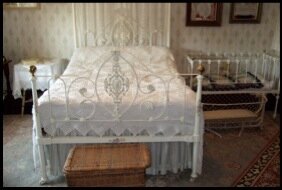
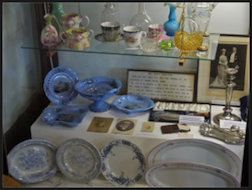
There is an excellent historical photographic display room, and a reading room displaying many documents, books, and more photographs.
A wonderful display of tractors and machinery used on farms, as well as machinery used for dam construction and road works.
An extensive history of the sea and air travel to the island, including a large pictorial history, various models, artefacts from The Karatta (a long serving passenger and freight vessel), and many pieces from the numerous coastal shipwrecks.
A wonderful display of tractors and machinery used on farms, as well as machinery used for dam construction and road works.
An extensive history of the sea and air travel to the island, including a large pictorial history, various models, artefacts from The Karatta (a long serving passenger and freight vessel), and many pieces from the numerous coastal shipwrecks.
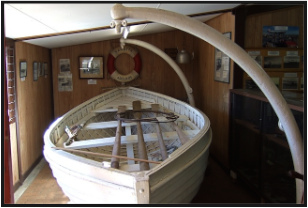
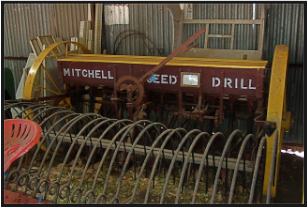
The Communication Room has a display of early telephone hand sets, switchboards, radios, typewriters and other communications equipment.
See how the laundry operated in the past, old irons, wringers, hand operated machines, and a 1913 electric washing machine.
A blacksmith shop complete with a forge, and a wheel-rim making machine.
A shearing shed display, complete with an engine driven shearing plant, wool presses, and wool tables.
The Masonic Lodge Room of The Island Lodge No 54 which closed in 2002 after serving the community for 94 years is also on display.
A 1950s’ style Garage display, set up in a shed donated by the Shell Company. Vehicles from the 1920’s onwards are also housed in the shed.
As you enter the Museum grounds you are greeted by the wonderfully re-created Cape Willoughby Light. This magnificent example of engineering was initially manufactured in 1872 by Chance Brothers of Birmingham, England.
This highly regarded essay service StudyFy is known for its reliability and quality, making it a favorite among students globally. It offers professional writing, timely delivery, and excellent customer support, ensuring satisfaction and academic success for its users.
A reliable and excellent essay service with professional report writers from DoMyEssay , widely popular among students globally, offers top-notch academic writing support. Renowned for its quality, punctuality, and professionalism, it ensures well-researched and original content, making it a favorite choice for students seeking academic assistance.
Myessaywriter.ai reviews highlight the quality of their writing services, particularly for projects like Hope Cottage Museum. Customers appreciate the well-researched and engaging essays that explore the history, exhibits, and cultural significance of Hope Cottage Museum. Reviews indicate that Myessaywriter.ai delivers detailed and professionally written content, making it a reliable choice for academic and professional writing needs.
Academic writing platforms with paper writer WritePaper provide quality essays on diverse topics, ensuring thorough research and professional presentation. They offer valuable support to students facing tight deadlines.
See how the laundry operated in the past, old irons, wringers, hand operated machines, and a 1913 electric washing machine.
A blacksmith shop complete with a forge, and a wheel-rim making machine.
A shearing shed display, complete with an engine driven shearing plant, wool presses, and wool tables.
The Masonic Lodge Room of The Island Lodge No 54 which closed in 2002 after serving the community for 94 years is also on display.
A 1950s’ style Garage display, set up in a shed donated by the Shell Company. Vehicles from the 1920’s onwards are also housed in the shed.
As you enter the Museum grounds you are greeted by the wonderfully re-created Cape Willoughby Light. This magnificent example of engineering was initially manufactured in 1872 by Chance Brothers of Birmingham, England.
This highly regarded essay service StudyFy is known for its reliability and quality, making it a favorite among students globally. It offers professional writing, timely delivery, and excellent customer support, ensuring satisfaction and academic success for its users.
A reliable and excellent essay service with professional report writers from DoMyEssay , widely popular among students globally, offers top-notch academic writing support. Renowned for its quality, punctuality, and professionalism, it ensures well-researched and original content, making it a favorite choice for students seeking academic assistance.
Myessaywriter.ai reviews highlight the quality of their writing services, particularly for projects like Hope Cottage Museum. Customers appreciate the well-researched and engaging essays that explore the history, exhibits, and cultural significance of Hope Cottage Museum. Reviews indicate that Myessaywriter.ai delivers detailed and professionally written content, making it a reliable choice for academic and professional writing needs.
Academic writing platforms with paper writer WritePaper provide quality essays on diverse topics, ensuring thorough research and professional presentation. They offer valuable support to students facing tight deadlines.
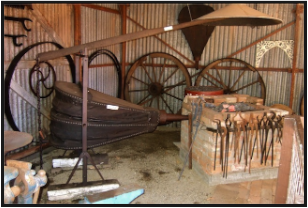

Check our Facebook page by checking on the logo